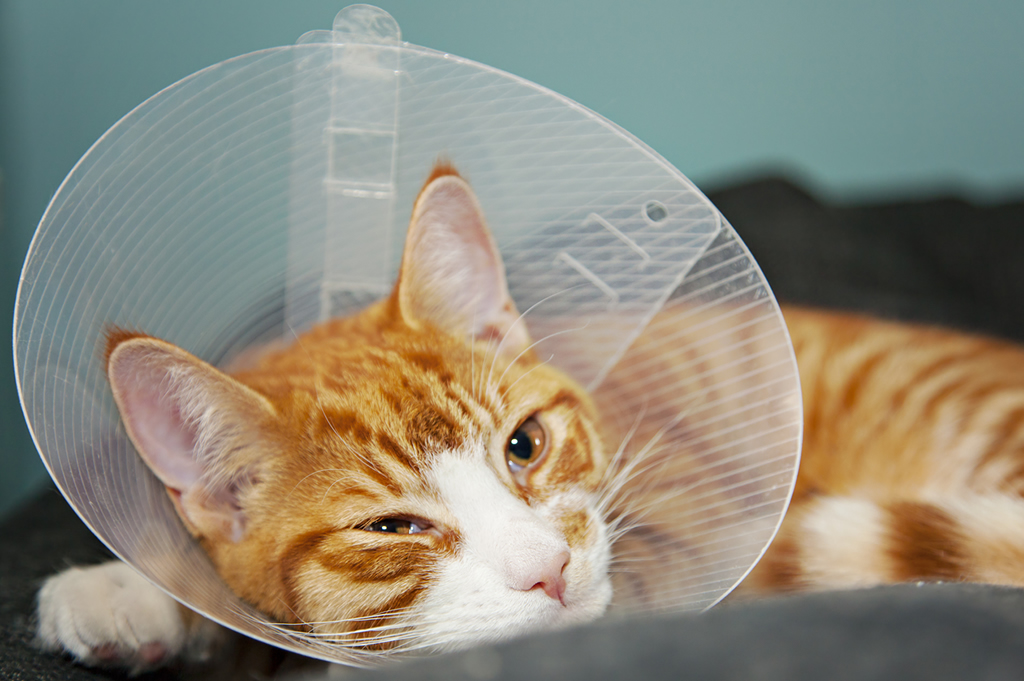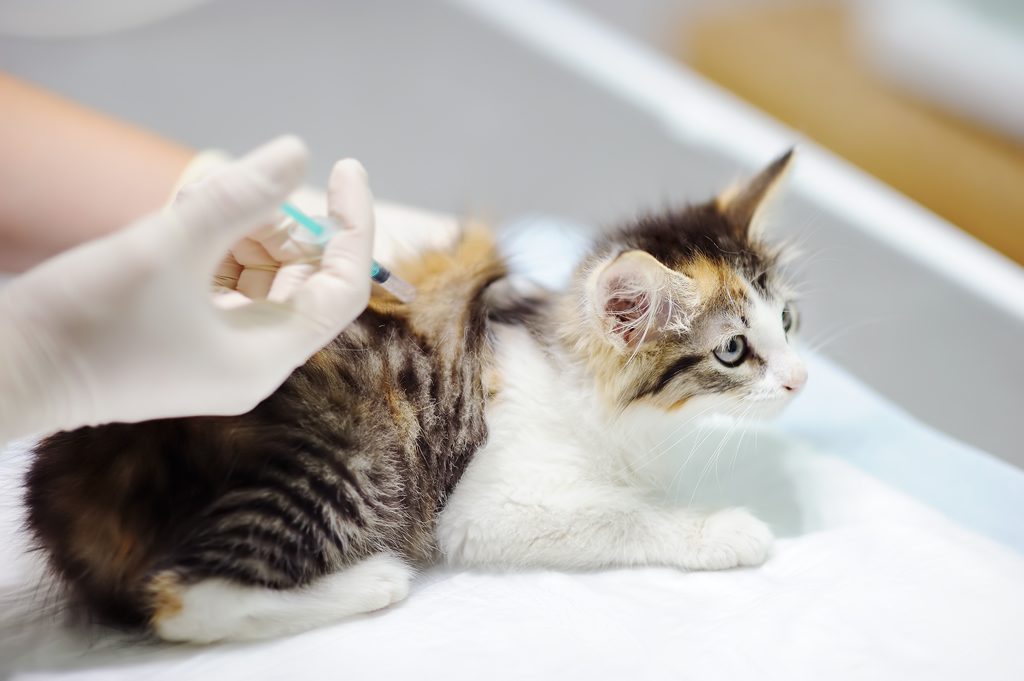Atopic dermatitis is a common skin disorder in dogs and cats caused by exposure to environmental allergens like pollen, moulds, grass or dust mites. Some pets can have symptoms all year round if they are allergic to things like house dust mites. Others might only have seasonal problems, such as an allergy to tree pollens. At The Insurance Emporium, we’ve spoken to our pet health expert all about atopic dermatitis, and what you can do if your pet is suffering.
Symptoms of atopic dermatitis

An animal affected with atopic dermatitis produces an excessive response when exposed to the allergen, or allergens, that they are allergic to, causing an inflammatory skin reaction. Look out for the following symptoms in your pet:
– Red, irritated, inflamed skin
– Intense itching (pruritis)
– Hair loss (alopecia)
– Over-grooming
The compromised skin barrier of the affected area can also be at risk of developing a secondary bacterial or fungal infection. Atopic dermatitis can affect any area of the skin, but commonly affects the muzzle, belly (ventrum), bottom (perineum), groin, armpits (axillae), limbs, ears and feet.
How severe are the symptoms?
Atopic dermatitis can vary in its severity. Some individuals may only display mild signs, such as chewing their feet. Some cats may present with self-trauma, particularly around their head and neck. Keep an eye out for hair loss on their belly caused by over-grooming, too. Skin lesions may look different in cats when compared to dogs, as cats could develop eosinophilia granulomas, which can be quite severe.
When should I contact my vet?

If you notice your pet itching regularly, they should be examined by your vet. If necessary, they may perform a skin work up, including blood tests, skin scrapes, swabs, hair plucks and biopsies. Your vet might also recommend a dietary exclusion trial to rule out any food allergies. Atopic dermatitis is often diagnosed through the exclusion of other possible clinical causes.
Your vet might conduct blood tests or skin reaction tests to identify the allergens which could be triggering your pet’s symptoms. It can be difficult to determine exactly what your pet is allergic to, so these results should be considered alongside presenting signs and your dog or cat’s history.
What could my pet be allergic to?

Just like people, your pets could potentially be allergic to anything in the environment, both indoors and outdoors. Some allergies are more common than others, and there can be a degree of overlap between allergies, such as allergies to different moulds. Atopic dermatitis and food allergies are often clinically indistinguishable as well.
The most common substances which can trigger allergic reactions are house dust and storage mites; microscopic mites invisible to the naked eye that can live in your clothes, furniture and carpets. Your pet may also be allergic to grass, weed or tree pollens, as well as certain types of mould.
Are certain pets more likely to develop atopic dermatitis?
The condition typically occurs in animals genetically predisposed to the condition and is more common in certain breeds. In dogs, atopic dermatitis is common in French Bulldogs, Labradors, West Highland White Terriers and other Terriers. In cats, the Abyssinian and Devon Rex are more likely to develop the condition.
Atopic dermatitis can occur at any age, but the condition is more common in younger pets. Dogs can develop clinical signs between six months and five years old, and as many as 75% of feline cases develop symptoms before they are three years old.
How do I manage atopic dermatitis in my pet?

An important first step to manage your pet’s atopic dermatitis is to reduce their exposure to certain environmental allergens. Just keep in mind, it can be difficult and often impossible to completely prevent exposure to certain allergens.
Long-term management
The condition requires long-term management through several different approaches. Management frequently includes using medication to suppress the pruritius and inflammation, using drugs like steroids, antihistamines or Cyclosporin. For dogs, Oclacitinib and Lokivetmab might also be recommended.
Topical medication
Your vet might recommend topical medication for your pet, such as steroid sprays and medicated shampoos. It’s important that your pet also has a good parasite control programme, and that you make sure any secondary infection is treated.
Immunotherapy
Allergen-specific immunotherapy might also be suggested by your vet to manage atopic dermatitis. The treatment programme should also aim to improve your pet’s skin health and coat quality through dietary supplementation or prescription diets, and appropriate medicated shampoos.
Fortunately, in recent years, new drugs have been developed to help manage atopic dermatitis. The condition still requires long-term management, but these new drugs have improved the outcome for affected animals, and the prognosis for animals with atopic dermatitis is usually good.
If you notice any symptoms of atopic dermatitis, we’d always recommend visiting your vet, who should be able to advise you on the right treatment for your pet. If you share your home with a furry friend, you might want to think about taking out insurance for your pet! Award-winning Pet Insurance from The Insurance Emporium can include Standard Benefits like Vet’s Fees up to £8,000*. Selected products are also 5 Star Rated by Defaqto^! Head on down to The Insurance Emporium to see if we have the right policy for you and your pet.
* Vet’s Fees cover up to £8,000 available on lunar monthly Lifetime Gold policies.
^ 5 Star Defaqto Rating applies to The Insurance Emporium’s Lifetime Gold Pet and Horse Insurance.
All content provided on this blog is for informational purposes only. We make no representations as to the accuracy or completeness of any information on this site or found by following any link on this site. We will not be liable for any errors or omissions in this information nor for the availability of this information. We will not be liable for any loss, injury or damage arising from the display or use of this information. This policy is subject to change at any time.


